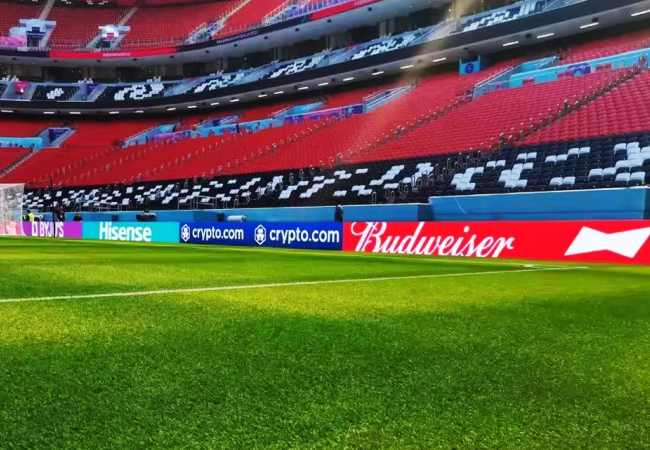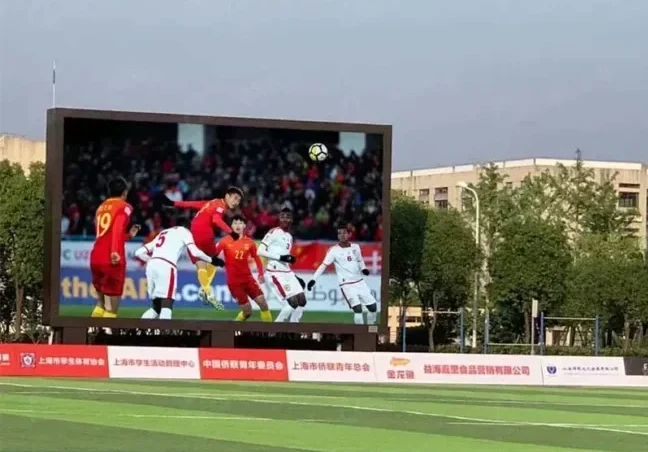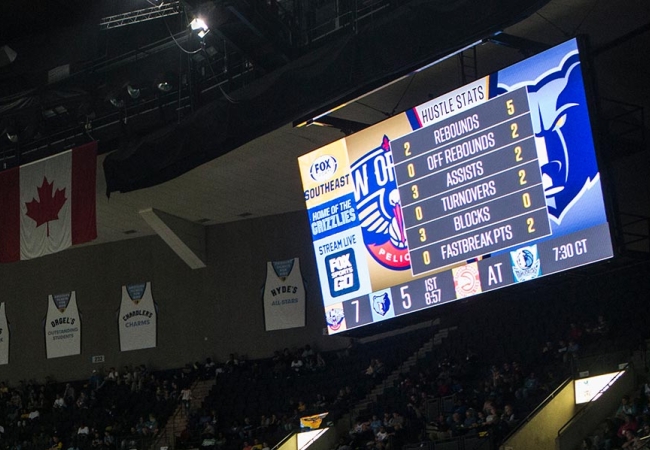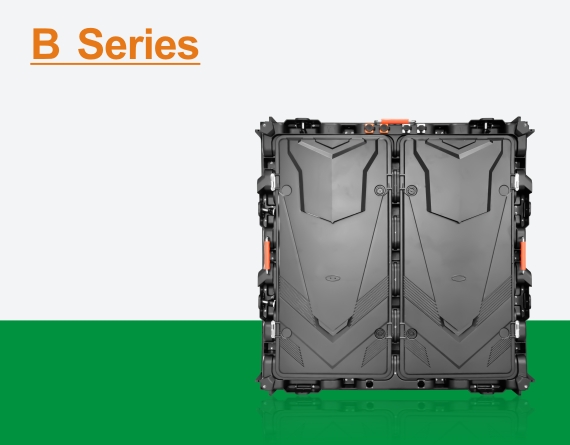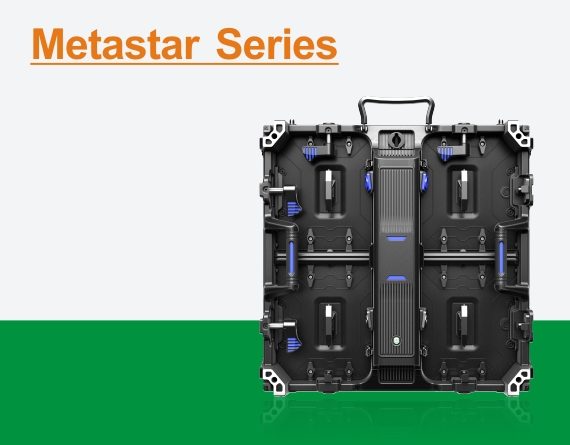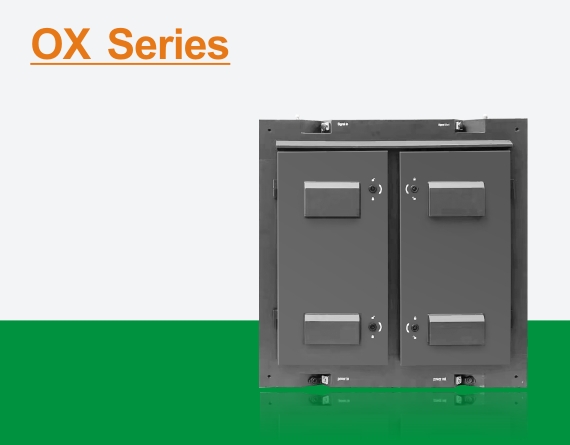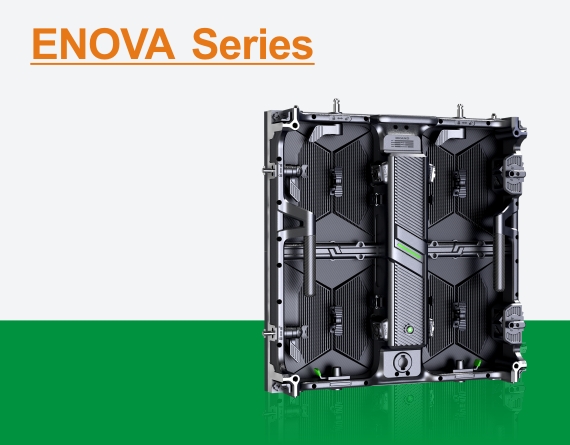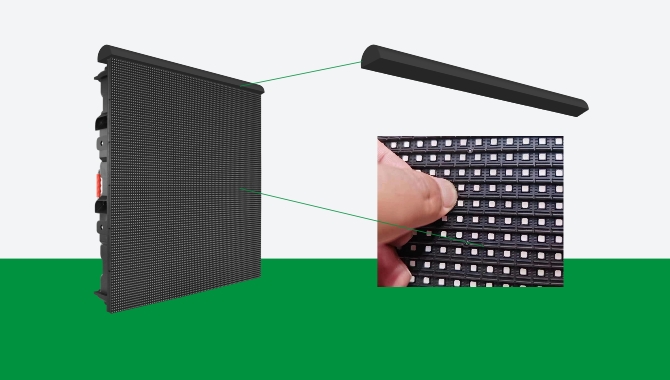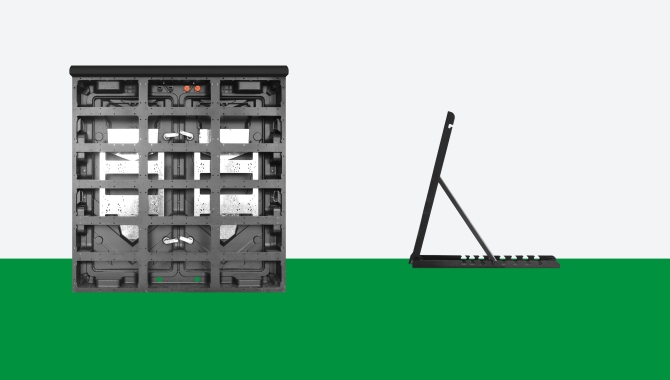What is an LED Stadium Screen?
An LED stadium screen, also known as a jumbotron or stadium LED display, is a large digital screen designed for sports venues and major events. It captures every thrilling moment: live matches, replays, crowd reactions, scores, and sponsor ads that flash between plays. Fans see everything unfold clearly, no matter how far they sit.
Built from hundreds of LED panels, the screen forms a bright, seamless wall that stays clear even under harsh sunlight. Its scale and color depth bring energy to the entire arena. Some screens hang above the field, others wrap around the stands, and some sit behind the goal—each layout adds its own impact.
A stadium LED display does more than show images. It lifts the atmosphere, connects fans with players, and turns every event into a visual experience. For clubs and brands, it also opens new ways to engage audiences and promote messages in real time.
Main components of a stadium LED display
A stadium LED display is made up of modules, cabinets, power supplies, and control systems that work together to deliver bright, stable, and weatherproof performance.
1. LED Modules
LED modules are the main part of the screen. These use high-brightness SMD or DIP lamps to reach 5,500 to 7,000 nits. This means the display stays clear, even in sunlight. You often see pixel pitches like P6, P8, and P10. These work well for people looking from 40 to 120 meters away.
The modules usually come in sizes like 320×160 mm or 480×320 mm. They are rated IP65 waterproof. You can put them together easily, and if one needs to be replaced, you can do it quickly.
2. LED Cabinet
The cabinet holds up the whole display and keeps the inside safe. Most cabinets come in sizes like 960×960 mm or 960×640 mm. They use die-cast aluminum or steel that has a layer on it. Aluminum cabinets are light and strong. They weigh about 26–35 kg for every square meter. The aluminum helps with heat and does not get rusty or break down outside, making it good for year-round use. Fast locks and cables tucked inside help make putting it together easy. They also help people fix or check it fast when needed.
3. Power Supply
You can count on these power systems—brands like Meanwell or G-Energy—to work well. They change over 90% of electrical power for your screen. Each unit is made to run 3 to 4 modules and gives them full safety from too much current, high heat, or short circuits. The steady flow of power stops flickering and keeps the screen brightness the same all the time.
4. Control System and Receiver Card
The control section determines the transmission and synchronization performance of image signals. Common brands, such as Novastar or Colorlight, offer receiving cards that support a maximum resolution of 512×512 pixels per image and include features such as brightness correction, grayscale enhancement, and HDR mode. Combined with a fiber optic master control system, they enable long-distance, real-time transmission and multi-screen control.
What are the Types of Stadium Screens ?
Modern stadiums have many types of LED screens. Each one has its own use. These screens help make watching the game better for people. They also help bring more value to teams and brands during the game. Together, they transform a stadium into a living, digital arena full of energy and emotion.
These screens sit along the edge of the field. They show ads from sponsors, messages from the team, and play animations while the match goes on. The length can be changed to fit what you need, and the lights are very bright
Most of the time, you see this big screen behind the goals or over the stands. It shows live video, slow-motion moments, and people watching the game. This screen helps every person feel close to the action, even in venues that have over 10,000 fans.
The LED scoreboards are at the center of every football stadium. It lets you see scores, how much time is left, when players come in or go out, and other stats, all in real time. Newer scoreboards can play videos and show moving pictures.
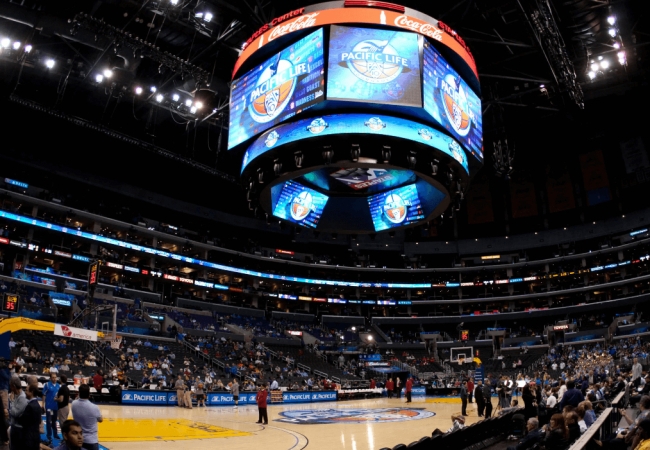
Some indoor football arenas or stadiums have a screen that hangs in the middle. This LED cube lets people see the action from all sides.
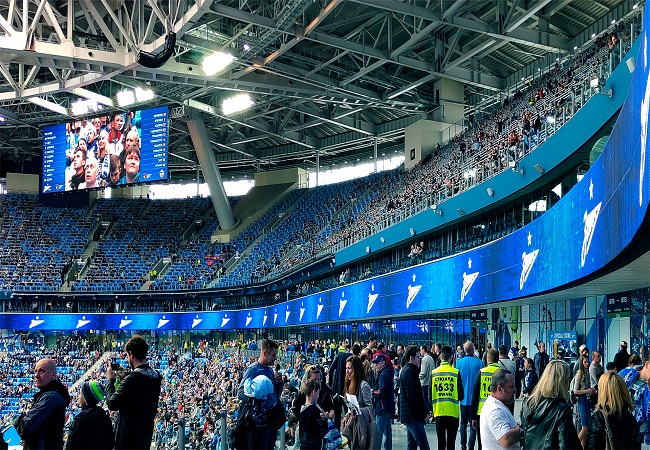
Installed along the middle tiers or balcony edges, ribbon screens show scrolling match data, event slogans, and brand content in dynamic motion.
Products of LED Stadium Screens
Features of Stadium LED Screen Applications
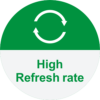
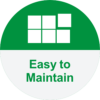
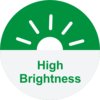
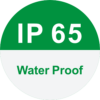
Outdoor Stadiums and Arenas
In outdoor stadiums, football fields, or skating rinks, LED screens are installed along the perimeter of the field to display advertisements, scores, and event slogans.
Their high brightness and waterproof design ensure clear images even in sunlight. They also give a steady place for brand ads that many people can see.
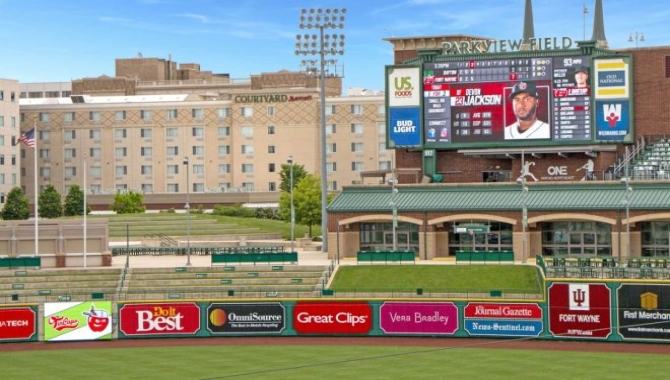
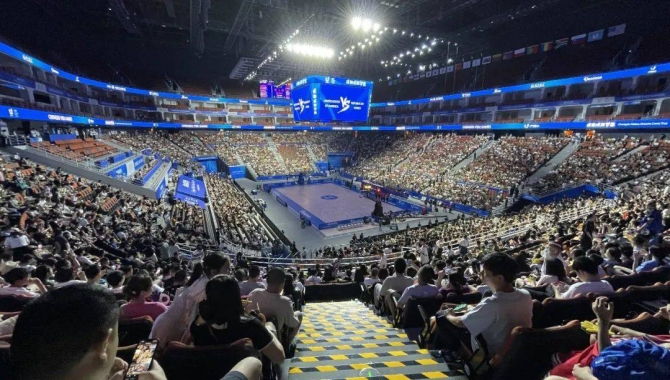
Indoor Large Stadium LED Screens
Basketball, volleyball, and multi-purpose sports centers usually have LED main screens or screens that hang down. These screens show the scores, stats about the players, and replays in slow motion. The image on the screen looks sharp, and the screen updates fast. This helps the audience see every great moment as it happens. It also makes the competition feel more professional.
These screens are good to use in interviews. People can use them in fun places too. They work well before matches to show promotions. Sponsors get more ways to show their brands with these screens.
LED Screens for Outdoor Live Broadcasts
At outdoor events like marathons, car races, and skiing, the big area can make it hard for people to see everything. To help with this, the site has giant LED screens. These screens show event video, scores, and what is being said at the event. This helps people who are far from the main spot feel as if they are part of it. It makes people interact and feel more involved.
Vehicle-mounted or trailer-mounted LED display systems are used at outdoor events. You can move them fast, and it is easy to set them up. They work in all types of weather, so live broadcasts go smoothly without stops.
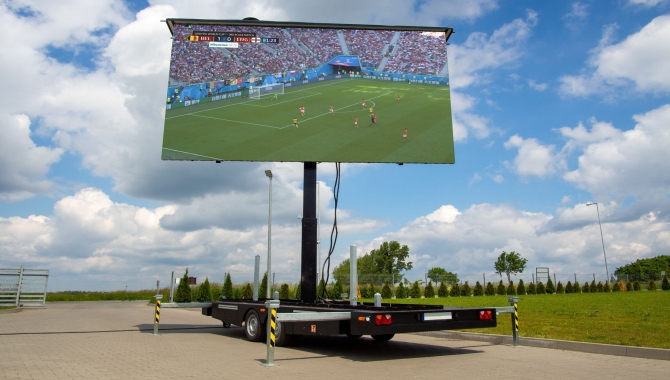
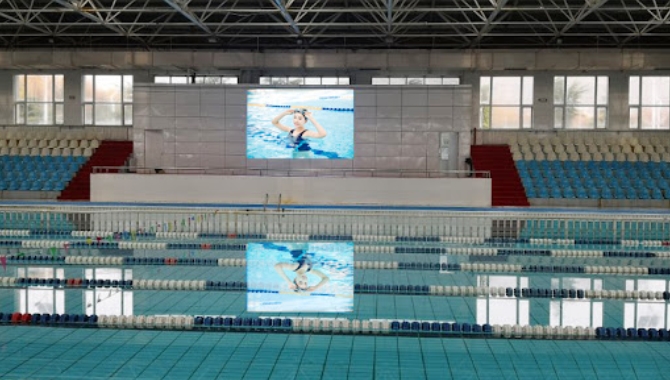
LED Screen for Swimming Applications
LED scoreboards in swimming pools are made to work well in places with a lot of moisture and fog. They keep working in high-humidity areas. They can show the scores, team details, and how the game is going at any time. This makes it easy for people to see and keep up with what is happening.
The screen is bright and easy to see from many different spots. People can read the data, no matter where they sit. A few top models also show game replays. They can show moments when awards are given or sponsor ads. This lets the screen share news and ads at the same time.
LED Screens in Indoor Live Events and Esports
Esports contests need a strong way for people to see what is happening. There are big LED screens at these events. These screens show player images, game video, and live scores. People watching can get a good look at the action. This also gives fans interesting things to watch from live events. It lets them feel part of what is going on. This is made for Generation Z fans and what they want to see at these events.
Screens can be used with things like smart technology, new digital tools, and VR. This brings new ways for people to work with screens.

What Are the Main Features of Sports LED Display?
Stadium LED displays mostly use top outdoor screens with strong builds and weather protection. They work well in sunlight, wind, and rain. The screens show athletes’ best moments as they play.
They show scores, player stats, and game replays right as they happen. This lets people sitting in the front and back rows see everything clearly.
Sports stadium LED displays use LED lights that help save energy. These displays keep the screen bright, show clear colors, and cut down on how much power is used. This also brings operating costs down. A few top models come with smart controls for brightness. They can adjust the screen light to match the surroundings, providing people with good comfort while the stadium still conserves energy.
Fence LED screens often have soft covers and padding to keep them in good shape. This helps make them safe and strong, even when things get tough during a big game.
Why Do Stadiums Need LED Displays?
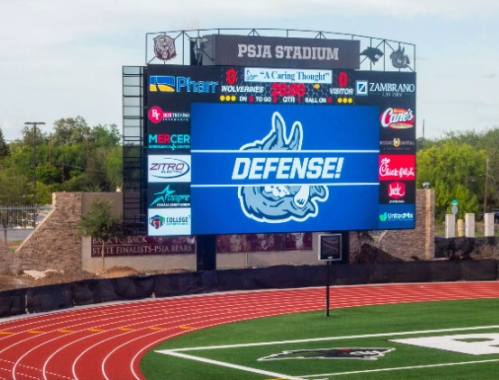
LED displays show scores, player stats, and game replays as they happen. This helps people not miss what is happening. The screen is bright and clear, so everyone can see, whether you sit at the front or at the back. These make watching the game better for all.
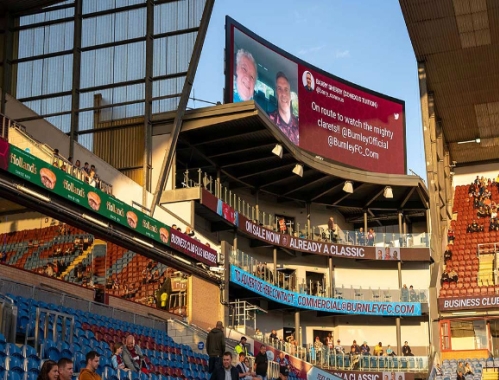
Fence advertising screens and the main display can show your brand ads many times. This helps to bring in more sponsors during the event. The venue can earn more money, and advertisers can make sure more people see their ads.
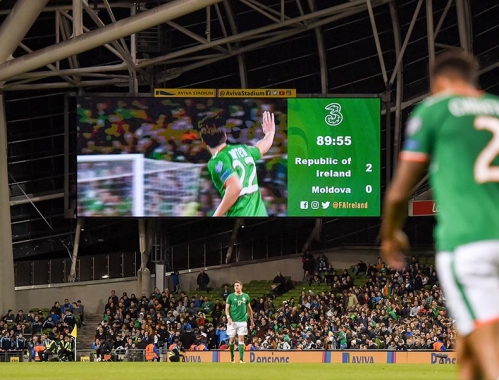
Large LED screens help by showing game information right away. They can also show emergency notices or event schedules. This makes the event run better and keeps people safe.
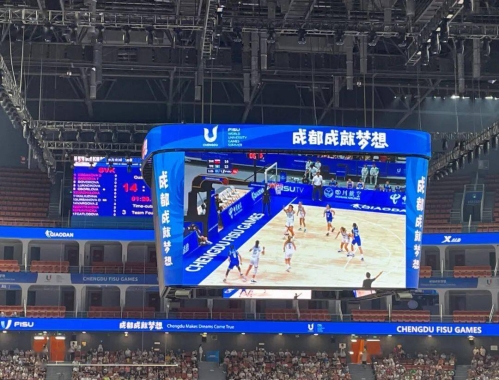
High-resolution LED displays make sports venues look more modern and professional. This attracts more event organizers and spectators, creating a positive cycle.
- Resources of Stadium LED Screen
Stadium LED Video Wall: Market, Types, Applications, and Beyond
Stadium LED Displays for Sports
P3.91 Outdoor LED Screen Stadium LED Screen 3x2m in Nigeria——Metastar Series
What are the Specific Requirements for Stadium LED Screen?
Jumbotron LED Screens: Everything You Need to Know
Understanding LED Screen Cabinet: A Comprehensive Guide
Stadium screens are known as Jumbotrons, LED scoreboards, or stadium LED displays.
The word “Jumbotron“ was first used for huge video screens made by Sony. Now, people use it for any big screen in sports places. Most stadiums have screens that use LED lights. These screens are very bright, show sharp colors, and play live videos.
They can be set up as center-hung main screens, perimeter advertising boards, or end-zone LED walls, based on the stadium’s shape and what the viewers need. These screens show live matches and quick replays. They also show scores, player stats, and sponsor ads, making the game day feel more exciting and fun.
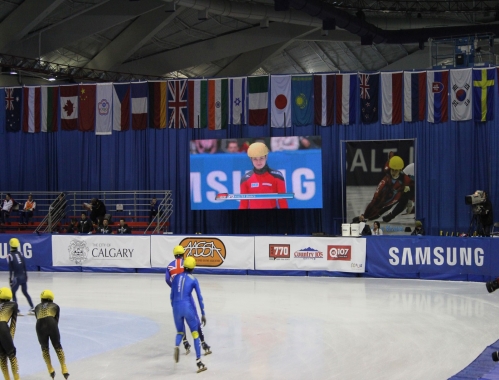
1. Main LED Scoreboard
The scoreboard is the heart of any football stadium. It shows scores, match time, player substitutions, and key statistics in real time. Newer versions combine video playback and animation to make match updates more vivid and interactive.
2. Stadium LED Video Wall
Usually placed behind the goals or above the stands, this massive screen plays live footage, slow-motion replays, and crowd shots. It turns every seat into a front-row experience, especially for large venues with more than 10,000 spectators.
3. LED Perimeter Board
Running along the edge of the pitch, these screens broadcast sponsor ads, team messages, and animations throughout the match. Their flexible length and bright visuals make them ideal for both live audiences and TV broadcasts.
4. Ribbon LED Display
Installed along the middle tiers or balcony edges, ribbon screens show scrolling match data, event slogans, and brand content in dynamic motion. They create a unified visual effect around the entire stadium without blocking the audience’s view.
Stadium screens are made to be strong, bright, and last a long time. The frame of each screen uses aluminum or magnesium alloy. This makes it light but keeps it tough. Every LED module is closed tight to keep out rain, dust, and heat. These screens keep working well even when the weather changes.
High-brightness LEDs make up the front of the screen. These give clear and bright colors, even if there is strong sunlight. Inside, good cooling and two power systems help the screen work well. The design lets you fix or change parts fast.
A stadium LED screen uses strong materials. It stays cool with smart cooling. The bright display shows clear and steady images for every match.
The largest stadium screen currently installed belongs to SoFi Stadium in Los Angeles. (TechRadar)
Here are the details:
- The center-hung “Infinity Screen” spans around 70,000 square feet, making it the biggest video board built for a sports venue. (News9live)
- It features roughly 80 million pixels and supports end-to-end 4K HDR production. (TechRadar)
- Suspended about 122 feet above the field, the screen stretches wider than the playing surface itself. (News9live)
In short: if you’re wondering which stadium has the biggest screen—SoFi Stadium’s display currently holds that title, setting a high bar in size and visual technology.
The stadium LED screen price can be very different. It depends on the size, pixel pitch, and what features it has. (RGBLEDWORLD)
- Small displays (10-20 m²) can be priced from US$50,000 to $100,000. (reissdisplay)
- Medium-sized screens (20-50 m²) often go for US$120,000-250,000 or more. (RGBLEDWORLD)
- Large stadium setups (100 m²+) may start at US $300,000 and up, with some going into the millions if you want the best options. (LEDSCREENPARTS.COM)
Key cost drivers include:
- Smaller pixel pitch (higher resolution) means the cost will be higher. (Radiant)
- Outdoor, high-brightness, and weatherproof designs will bring extra cost. (reissdisplay)
- Putting in the screen, the frame, and the system to run it, and making special shapes will all add up and raise the total budget. (eagerledscreen.com)
In short, you should set your budget based on screen area in square meters, resolution, and the things around the place. If you tell us the size of your stadium and how far people will sit from the screen, we can give you a cost estimate that fits what you need.
LED Stadium Screens for Sale
LEGIDATECH provides custom stadium LED screen solutions tailored for each venue’s layout and lighting conditions. From scoreboards to perimeter and ribbon screens, every system is engineered for clarity, durability, and easy control.
Contact us to plan your next stadium display project and see how our LED technology brings your event to life.




